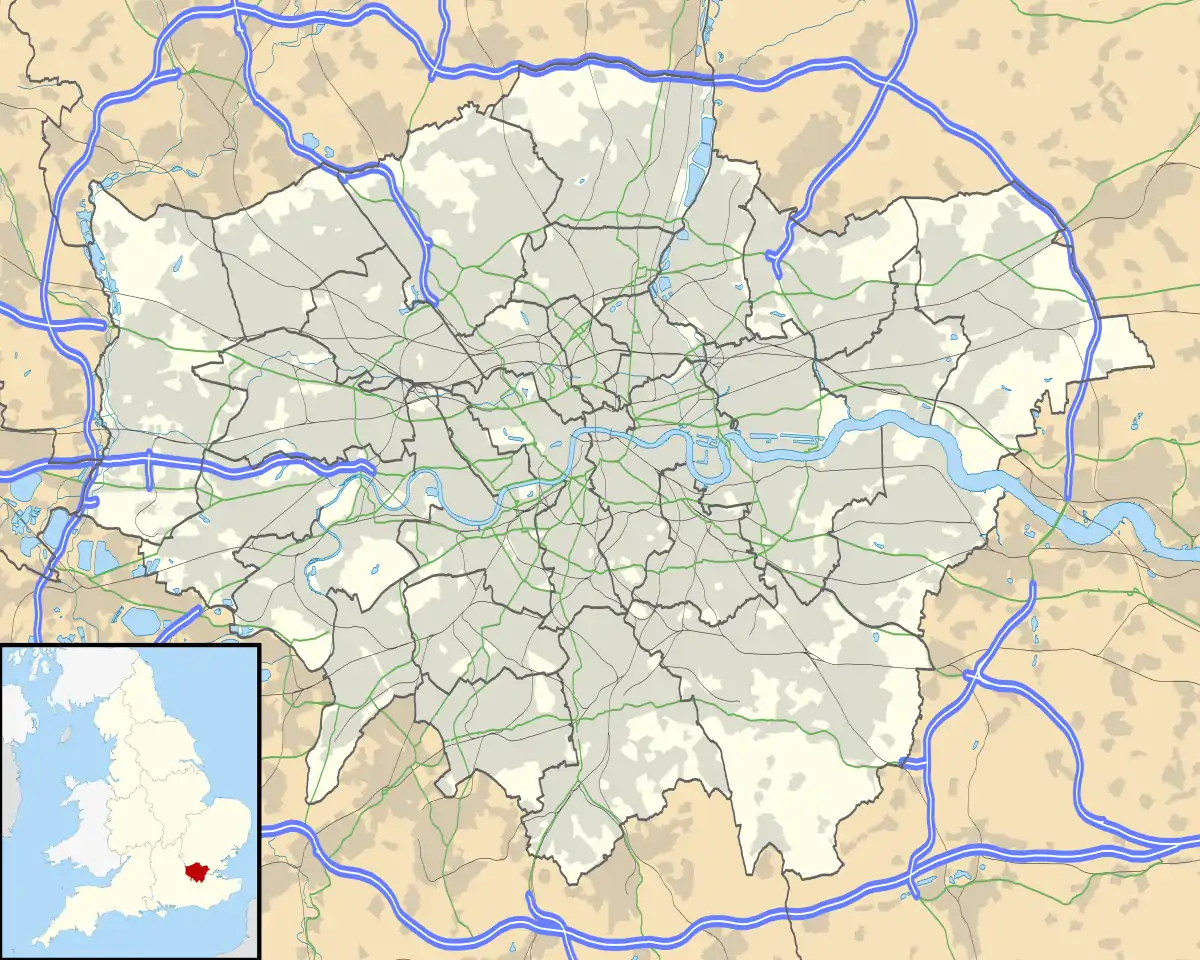Westcombe Park railway station
Westcombe Park station is in Greenwich, London, and is situated on the Greenwich Line connecting suburbs (e.g.: Deptford, Greenwich, Charlton, Woolwich, to Dartford, Kent) along the south side of the River Thames with central London stations (London Bridge, Cannon Street and Charing Cross).
| Westcombe Park | |
|---|---|
 | |
 Westcombe Park Location of Westcombe Park in Greater London | |
| Location | Westcombe Park |
| Local authority | Greenwich |
| Managed by | Southeastern |
| Station code | WCB |
| DfT category | D |
| Number of platforms | 2 |
| Accessible | Yes[1] |
| Fare zone | 3 |
| National Rail annual entry and exit | |
| 2015–16 | |
| 2016–17 | |
| 2017–18 | |
| 2018–19 | |
| 2019–20 | |
| Key dates | |
| 1 May 1879 | Opened |
| Other information | |
| External links | |
| WGS84 | 51.4842°N 0.0187°E |
It is 5 miles 7 chains (8.2 km) down the line from London Bridge.
History
The station was opened by the South Eastern Railway in 1879, the year after the through line from Greenwich to Maze Hill was finally completed. This connected the original London and Greenwich Railway to the North Kent Line just west of Charlton. The section between Charlton and Maze Hill had opened in 1873, with Maze Hill functioning as a terminus until 1878.[3]
Location
The station lies at the northern end of a conservation area (Westcombe Park), 5–10 minutes walk down Westcombe Hill from the Blackheath Standard area of Blackheath. It is the closest station to Woodlands House (once the home of John Julius Angerstein and later an art gallery and history archives centre), and is also close to the southern approach to the Blackwall Tunnel, a notorious traffic bottleneck.
Services
The typical off-peak service from the station is:
- 4tph (trains per hour) to London Cannon Street
- 2tph to Luton via London Bridge, St Pancras International, St Albans City and Luton Airport.
- 2tph to Slade Green, returning to London Cannon Street via Sidcup
- 2tph to Barnehurst, returning to London Cannon Street via Bexleyheath
- 2tph to Rainham via Dartford and Gravesend
| Preceding station | Following station | |||
|---|---|---|---|---|
| Maze Hill | Southeastern Greenwich Line |
Charlton | ||
| Thameslink Thameslink |
||||
Connections
London Buses routes 108, 286, 335 and 422 serve the station.
References
- "London and South East" (PDF). National Rail. September 2006. Archived from the original (PDF) on 6 March 2009.
- "Station usage estimates". Rail statistics. Office of Rail Regulation. Please note: Some methodology may vary year on year.
- http://rail.felgall.com/ser.htm SER Lines and Stations
External links
| Wikimedia Commons has media related to Westcombe Park railway station. |
- Train times and station information for Westcombe Park railway station from National Rail